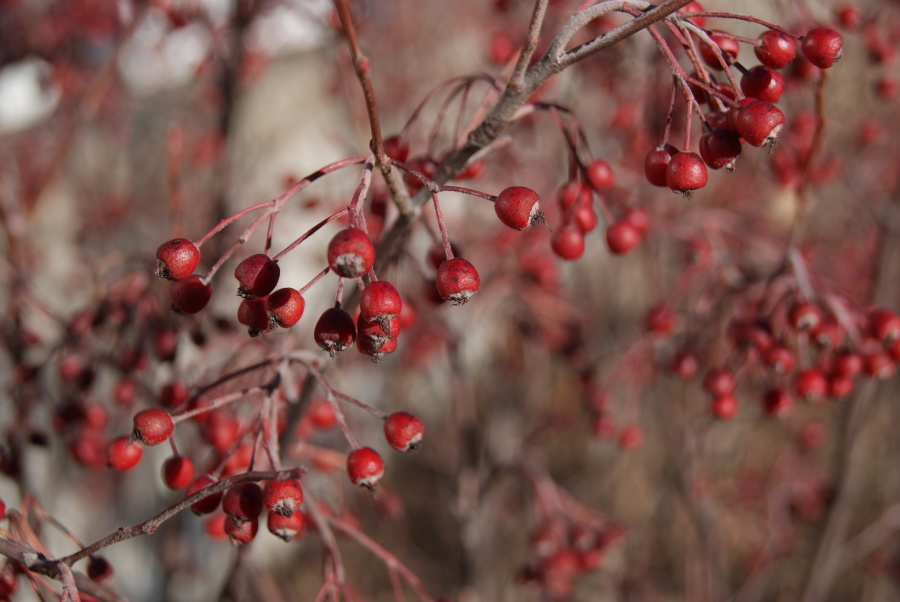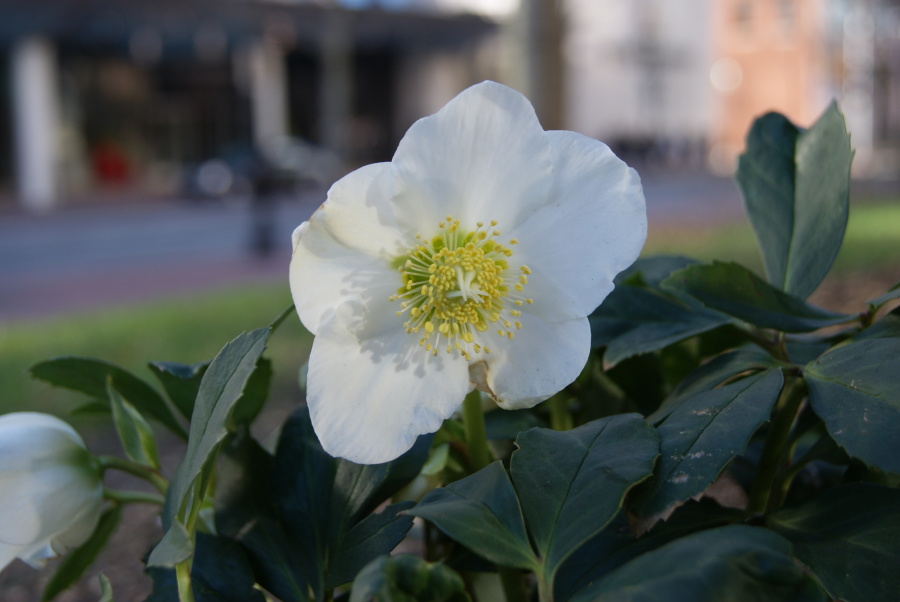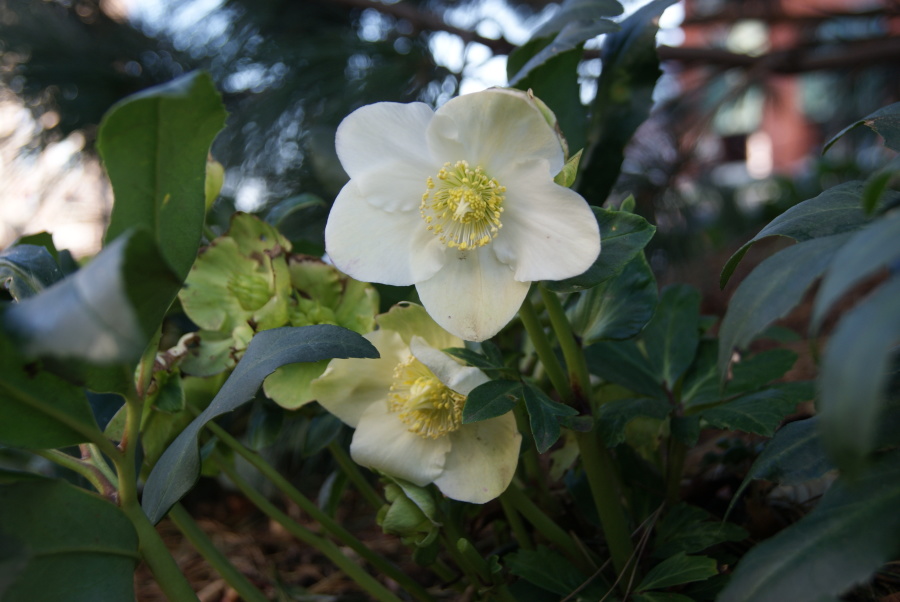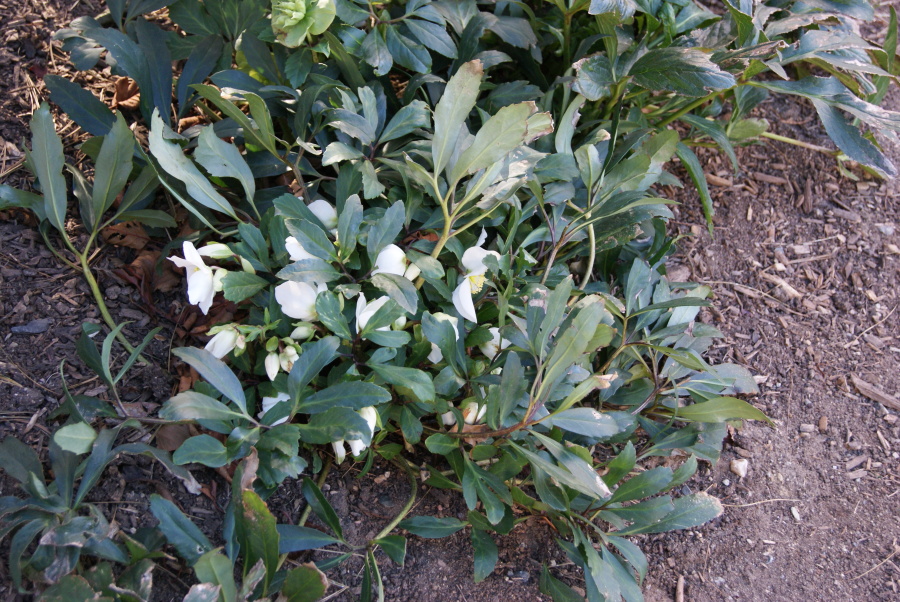The temperatures have dropped below freezing, the leaves are gone from all the trees, and someday the snow will fly. It is winter on the Greenway.
Horticulturally, it is a vastly different time. The herbaceous perennials, the annuals, and many of the shrubs and trees have lost their green. Leaves, stems, flowers, and seeds are mostly gone. What is left is the structure of the trees and woody plants, the contours and shape of the land itself, and the texture of the dried residue – the grasses, the twigs, the empty seed pods and drying fruits. The presence of the coniferous trees and the broadleafed evergreen shrubs is more evident.
The winter aesthetic can be sparse and simple, but it is also elegant, intricate and subtle. We look to the bark of trees, the seed heads of flowers, the structure and form of conifers, and berries of shrubs to catch out interest. They are especially notable when outlined in snow or frost but equally fun to observe on a warm winter day with that low arc of sun shining through them. To see more about winter interest and conifers check out our blog on evergreens from a previous winter. To learn more about the horticulture staff’s early winter task of protecting the evergreen shrubs in the park from the blistering cold and harsh weather see this great blog from 2010.


This year the perennial Helleborus niger, the Christmas rose, started blooming in late November. These wonderful plants will continue to bloom until February or March, depending on the weather and snow accumulations. Because these plants are at their showiest in the winter and spring, they are consciously planted under shrubs and between plants that shade and protect them during the warmer summer months when they are more inconspicuous. As we clean leaves out of the beds, and as long as there isn’t much snow, you should be able to find them blooming on the Fort Point Channel parks – near Oliver, Congress and Pearl streets.

Hellebores have wide dark green leathery leaves in rosettes forming large, low mounds throughout the gardens. The flowers are pure white with yellow stamens in the centers, on short stocky stems, often fading to a quiet pink, or maturing to a pale green. Lately some of the new blooms appear yellow – an unusual color in hellebores except in carefully hybridized and selected cultivars. In ours it may just be a factor of temperature and soil. The flowers of hellebores are botanically very special. In contrast to other plants the flower is formed by the sepals, which normally protect the flower, and not by the petals, which are small and barely visible.




